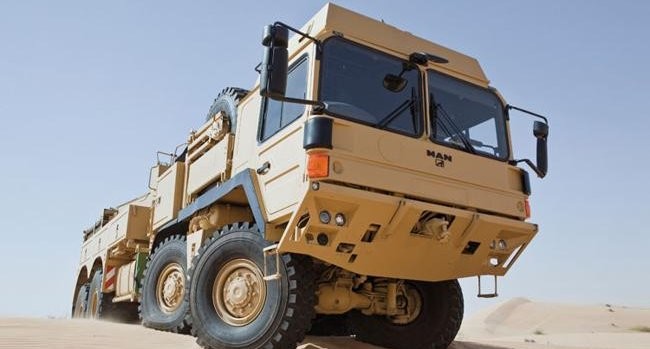
A Brief History of the MAN KAT Truck
In 1962 the Bundeswehr planned to replace its fleet of vehicles, which still stemmed from the time the army had been founded. It wanted amphibious two, three and four-axle vehicles in the 4 to 10-tonne payload range. Because a high degree of new development was necessary, the German federal agency for defence technology and procurement, found itself unable to accept the responsibility for a decision but suggested the bidding companies form a common development bureau and agreed on one unified project.
Two years later in 1964, the "Common Bureau of the German Utility Vehicle Industry" (Gemeinschaftsbüro der Deutschen Nutzfahrzeugindustrie) was formed under the leadership of MAN. The first category I-MAN, the 10 t mil gal, was only to be delivered on 29 November 1976.
General Characteristics and Design
Military versions of the I-MAN include full blackout lights circuit completely separated from the standard lights, a military instrument layout with blackout option, an emergency stop switch to cut electrical power, a roof hatch with rotary machine gun mount, and rifle brackets. The vehicles are category I (KAT I) special military developments, and as such fully cross-country mobile, in other words, there isn’t a place on earth they can’t go!
All trucks of the series share a modular design. They have a torsionally rigid box-section frame with highly mobile axles linked to the frame via coil springs. The engine is mounted inside the forward-control cab, which is separated into a driver and engine compartment by a firewall. As a distinctive feature, the engine is located to the rear of the driver compartment instead of beneath it.
This way, the total height could be kept below 2.9 m, which means the trucks can be transported on standard railway flatcars. The cab of the first batch does not tilt forward for maintenance because the vehicles were still based on the amphibious prototypes.
Hollywood Producers liked it so much they used it in the Mad Max Film in 2015:
The tilting cab was only introduced with the second batch in the mid-80s. The engine powers the front and rear axles via a torque converter, semi-automatic transmission and a transfer case. At the same time, this allowed raising the number of gears from six to 16, and the theoretical top speed from 90 to about 130 km/h. This, in turn, led to much lower engine speeds at the usual top speed of 80 km/h, lowering fuel consumption. Vehicle voltage is standard 24 Volts. The tow hitch is a standard NATO coupling suitable for towing trailers even in difficult terrain, although they must be equipped with the matching lunette ring

